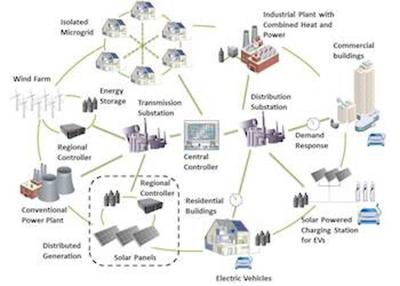
#Energy markets and responsive grids how to
The electricity industry’s challenge lies in how to manage this emerging hybrid grid comprising thousands of distributed resources. This helps reduce grid stress so both the customer and provider capture energy savings, and lets renewable energy maintain its value despite its intermittent nature.
#Energy markets and responsive grids install
We install natural gas backup generators on a customer’s site and, during high grid demand, remotely activate that generator to power the customer’s operations. Technology we call asset-backed demand response. NRG, for one, offers an example: a new version of distributed energy Here again, disruption delivers better solutions.

Mission-critical companies need uninterruptable power to protect against grid outages and natural disasters. Let’s also remember the importance of resilient electricity. These elements help foster distributed energy technologies, which is a key to helping sustainable energy thrive.

Enhancements arise when electric power markets let competition deliver solutions that are flexible and affordable–and good for the environment. This is where disruption takes hold, and the powerful possibilities that come with it. And, since the sun doesn’t always shine and wind doesn’t always blow, we must balance these intermittent resources for a more responsive, diverse and dynamic grid–one we can flexibly manage to support everyone’s power needs, unique demands and cost-conscious constraints. Energy Information Administration forecasts near seven percent growth in commercial and industrial energy demand between now and 2022.Īlong with greater demand, the large customers’ energy needs have become more complex. Simply put, our businesses and industries want more energy. While embracing cleaner energy is important, companies and organizations must appreciate that solar panels and wind turbines alone won’t get us to a sustainable energy future, and rising demand is the primary consideration. Just in time, too, as currently 135 companies belong to RE100, an organization of the world’s most influential corporations committed to 100 percent renewable energy. As costs for renewable and sustainable solutions fall, bigger, better and more beneficial energy possibilities emerge. Indeed, as more companies pursue cleaner, more reliable energy, new approaches can make both of these goals a reality. With new technologies, this old approach has lost its advantage. This volume will be of use to experts and newcomers interested in all aspects of the challenges facing the creation of a more sustainable electricity infrastructure, in areas such as distributed and stochastic optimization and control, stability theory, economics, policy, and financial mathematics, as well as in all aspects of power system operation.In the past, when utilities needed more energy, the answer was always the same: build another big traditional-generation power plant, the transmission lines to go with it, then pass the costs to customers. Contributors include leading experts from academia and industry in power systems and markets as well as control science and engineering. The volume includes chapters on significant challenges in the design of markets and incentives, integration of renewable energy and energy storage, risk management and resilience, and distributed and multi-scale optimization and control. The workshop brought together a diverse group of experts to discuss current and future challenges in energy markets and controls, along with potential solutions.

This volume consists of selected essays by participants of the workshop Control at Large Scales: Energy Markets and Responsive Grids held at the Institute for Mathematics and its Applications, Minneapolis, Minnesota, U.S.A.


 0 kommentar(er)
0 kommentar(er)
